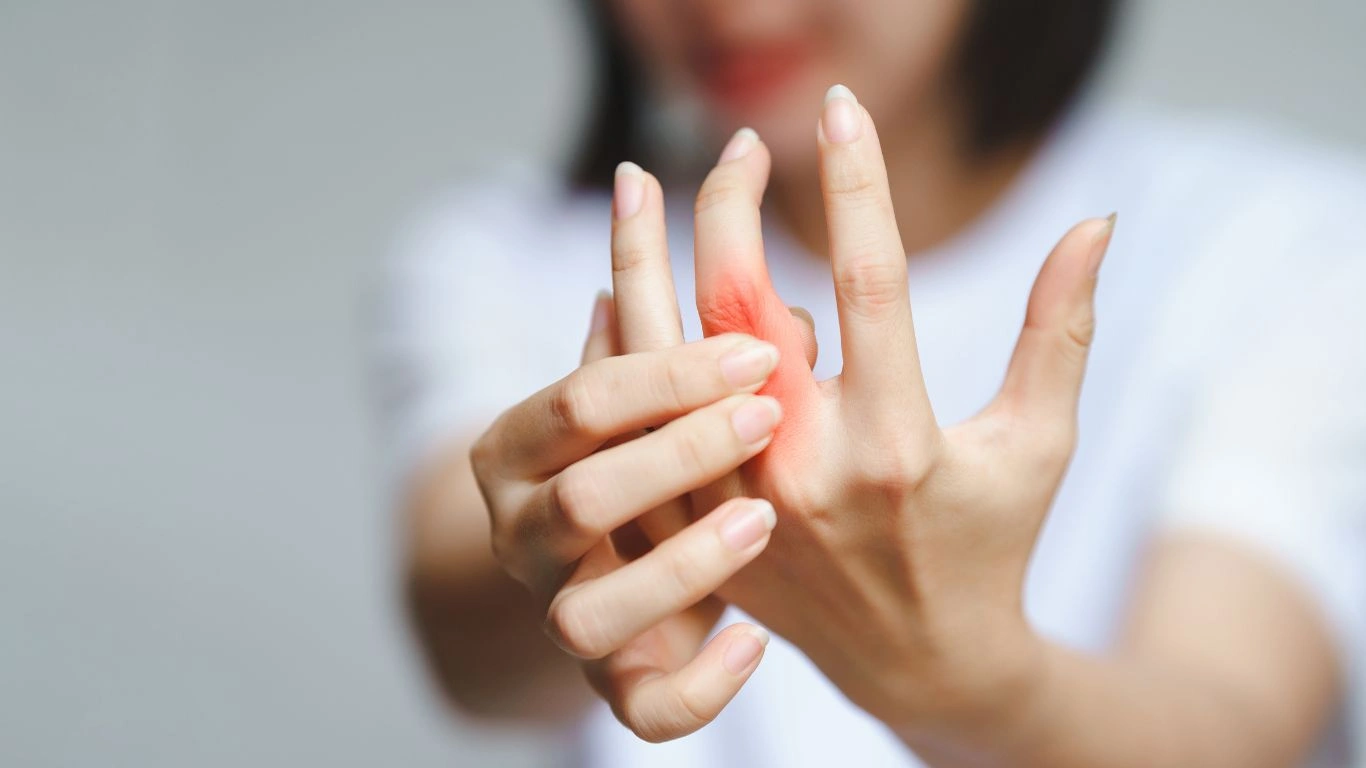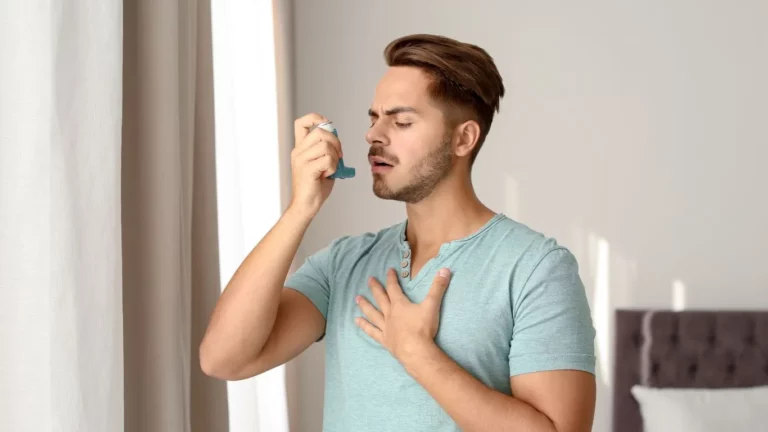How RA Affects Nail Health: Managing Changes for Better Care
Living with rheumatoid arthritis (RA) means navigating a lot of unexpected challenges—one of which, surprisingly, is how RA affects nail health. From my years as a Rheumatology nurse practitioner, I’ve seen firsthand how patients often overlook their nails when managing their disease. Yet, nails can tell us a lot about what’s happening beneath the surface, and RA’s impact on them goes beyond simple aesthetics. If you’ve noticed changes in your nails and wondered if they might be related to your arthritis, you’re not alone. Let’s dive into how RA can influence nail health and why paying attention to these small signs matters.
How Rheumatoid Arthritis Impacts Nail Health

One of the lesser-known symptoms of RA is its effect on the nails. You might ask, “How exactly does RA affect nail health?” Well, RA is an autoimmune condition that primarily targets joints, but because it causes systemic inflammation, it doesn’t stop there. The inflammation can reach the small blood vessels and connective tissues surrounding your nails, leading to a variety of nail changes.
Nail Changes You Might Notice
When working closely with patients, I’ve observed some common patterns in nail health among those with RA:
- Thickening and Ridging: Nails often develop horizontal or vertical ridges. This happens due to inflammation interfering with the nail matrix, the part that produces your nail.
- Discoloration: Nails may turn yellowish or develop spots, sometimes due to poor circulation or secondary infections.
- Brittleness and Splitting: Chronic inflammation and dry skin around the nails can cause nails to become fragile and prone to splitting.
- Clubbing or Deformities: In rare cases, the shape of nails can change, becoming rounded or bulbous due to long-term vascular changes.
These nail changes aren’t just cosmetic. They can signal worsening inflammation or complications like psoriatic arthritis overlap or secondary fungal infections. For instance, in my practice, a patient with RA and persistent yellow nails actually had a fungal infection, which was initially missed because the focus was mostly on joint symptoms.
Why Nail Health Matters in RA
Many people underestimate the importance of nail care in RA management. But nails can provide a window into your overall health and inflammation status. Here’s why you should pay close attention:
- Indicator of Disease Activity: Nail abnormalities can sometimes correlate with flare-ups or worsening inflammation.
- Early Warning Signs: Changes might indicate complications like infections or medication side effects.
- Quality of Life: Nail pain, discomfort, or infections can add to the daily burden RA already places on your hands.
From my clinical experience, encouraging patients to report nail changes often helps catch problems early. Simple things like regular moisturizing, gentle nail care, and seeing a dermatologist when necessary can prevent a lot of discomfort and complications.
The Science Behind RA and Nail Changes

RA’s systemic inflammation doesn’t just stick to joints—it affects blood flow, skin, and connective tissues. The nail matrix, responsible for producing the nail plate, is sensitive to these inflammatory processes. When inflammation hits the matrix, it can disrupt normal nail growth and appearance.
Understanding the Inflammatory Process
At its core, RA causes your immune system to mistakenly attack your own tissues, releasing inflammatory chemicals that can damage blood vessels and the connective tissue supporting the nails. This leads to:
- Reduced blood supply: Nails need healthy blood flow to grow strong and healthy; inflammation can choke off this supply.
- Disruption of keratin production: Keratin is the protein nails are made of, and inflammation can interfere with its production.
- Secondary infections: Damaged skin and nails become an inviting environment for fungal or bacterial infections.
For patients, understanding this can be empowering. It’s not just about nails looking odd; it’s a signal your body is dealing with inflammation in more ways than one. This knowledge helps me guide patients towards comprehensive care—not just joint-focused but whole-person care.
Common Nail Conditions Seen in Rheumatoid Arthritis

Now that we understand how RA affects nail health on a biological level, let’s talk about the specific nail problems you might encounter. In my years working with patients, I’ve noticed a handful of common conditions that pop up time and again. Recognizing these can help you take better care of your nails—and alert your healthcare provider if things start to look different than usual.
1. Nail Pitting
Nail pitting looks like tiny dents or pits on the surface of the nails. It’s more often linked with psoriatic arthritis but can occur in RA as well, especially when there’s overlap or concurrent psoriasis. These pits happen because the nail matrix is inflamed or damaged, leading to irregular nail growth. I’ve had patients describe it as if their nails look “like sandpaper” or “full of tiny holes.” While it doesn’t usually cause pain, it can make nails brittle and prone to breakage.
2. Onycholysis
This is a condition where the nail starts to lift away from the nail bed. It often presents as a white or yellowish gap between the nail and the skin beneath it. Onycholysis can occur due to inflammation, trauma, or secondary infections—especially fungal infections, which are more common in RA patients because of immunosuppressive medications. When I spot this in patients, I always check if they have any pain, discharge, or other signs of infection to determine the next steps.
3. Beau’s Lines
Ever noticed horizontal grooves or lines across your nails? Those are called Beau’s lines. They can show up after a period of illness or stress on the body—like an RA flare-up or a course of steroids. These lines reflect a temporary halt in nail growth and usually grow out over time. Patients often get worried, but I reassure them that these are generally harmless and a sign their body was dealing with something intense, even if they didn’t fully realize it at the time.
4. Yellow Nail Syndrome
While rarer, yellow nail syndrome can affect RA patients, especially those with lung or lymphatic involvement. The nails turn thick, yellow, and grow slowly. This syndrome can sometimes hint at underlying respiratory issues, so if you notice this change, it’s important to share it with your healthcare team promptly.
Practical Tips for Managing Nail Health with RA

From my clinical experience, managing nail health in RA involves a blend of vigilance and gentle care. Here are some practical tips I share with patients that have made a real difference:
Keep Your Nails Clean and Dry
Because RA can increase susceptibility to infections, maintaining nail hygiene is key. I always encourage patients to gently clean their nails and dry them thoroughly after washing. Avoid soaking nails in water for too long, as this can soften and weaken them.
Moisturize Regularly
Inflammation and medications can dry out the skin and nails, so moisturizing is a must. I suggest thick creams or oils, especially those containing ingredients like shea butter or vitamin E. Applying these daily helps keep the cuticles and surrounding skin supple, reducing cracking and splitting.
Avoid Nail Trauma
Simple habits can protect your nails: don’t bite or pick at them, use gloves when doing housework or gardening, and steer clear of harsh chemicals. I’ve seen patients unintentionally worsen nail issues by trying to “fix” them aggressively—gentle care goes a long way.
Trim Nails Carefully
Keep nails trimmed to avoid snagging or accidental tearing. Using a fine nail file instead of scissors can prevent rough edges that invite infections. If arthritis limits your hand dexterity, there are specialized nail care tools that make trimming easier and safer.
Watch for Signs of Infection
Redness, swelling, pain, or discharge around the nails should never be ignored. Infections can worsen quickly, especially in an immune-compromised body. If you notice any of these signs, seek medical advice promptly. In my practice, early treatment of nail infections helps prevent complications and preserves nail health.
When to See a Specialist About Your Nails

Sometimes, despite your best efforts, nail problems persist or worsen. At that point, consulting a dermatologist or a rheumatologist with nail expertise is a smart move. Here’s when you should consider making that call:
- Nail changes that don’t improve with basic care
- Severe pain or swelling around the nail or fingertips
- Suspected fungal or bacterial infections that need medical treatment
- Unusual changes like nail loss, deformities, or thickening
From my perspective, collaborating with dermatologists helps create a more targeted treatment plan, whether that involves topical medications, antifungals, or adjustments in RA therapies. The goal is to control inflammation while protecting nail health.
Integrating Nail Health Into Your Overall RA Care

When managing rheumatoid arthritis, it’s easy to get laser-focused on joint pain and mobility, but from my experience as a nurse practitioner, I can tell you that taking care of your nails is an important piece of the puzzle too. Nail changes can reflect the overall state of your disease and sometimes even warn of complications before they become obvious elsewhere. That’s why I always encourage patients to bring up any nail concerns during their visits—it helps us treat RA more holistically.
One of the biggest lessons I’ve learned over the years is that self-awareness paired with proactive care really pays off. Monitoring your nails for new changes, practicing good nail hygiene, and communicating openly with your healthcare team are all simple steps that can prevent discomfort and improve quality of life.
How Nail Care Supports Joint Health
It might seem like nails and joints are worlds apart, but they’re actually connected in a few meaningful ways. For example:
- Reducing Infection Risk: Healthy nails mean fewer chances for infections that could spread to nearby joints, which is especially critical when your immune system is compromised by RA or its treatments.
- Maintaining Hand Function: Painful or damaged nails can limit how you use your hands, adding to the challenges caused by joint stiffness and swelling.
- Boosting Confidence: Let’s be real—healthy nails help people feel better about themselves, which can positively affect mental health and motivation to keep up with overall self-care.
Incorporating nail care into your RA routine doesn’t require a lot of extra time. Things like moisturizing, gentle trimming, and protecting your hands during chores add just minutes but make a big difference over time.
Medications and Their Impact on Nail Health

Something I always discuss with my patients is how their RA medications might affect nails. While these drugs work hard to calm inflammation and protect your joints, some can have side effects that show up in your nails or skin. Understanding this helps you keep track of what’s normal and when to get a second opinion.
Common Medication-Related Nail Effects
- Methotrexate: This staple RA drug can occasionally cause nail changes like thinning, brittleness, or even mild discoloration. Usually, these effects improve once the body adjusts or the dose changes.
- Biologics and JAK Inhibitors: These newer treatments have fewer direct nail side effects but may increase infection risk, which can indirectly impact nail health.
- Steroids: Prolonged steroid use can thin the skin and nails, making them more fragile and susceptible to damage.
In my practice, I always remind patients to report any new or worsening nail issues, especially if they start shortly after changing medications. Sometimes adjusting treatment or adding topical therapies can help balance RA control and nail care.
Natural and Nutritional Supports for Nail Health
Beyond medications, nutrition and lifestyle play a huge role in how your nails fare with RA. I encourage patients to think about their diet and supplements as allies in nail health.
Here are some nutrients and habits I often recommend:
- Biotin: This B-vitamin supports keratin production and can strengthen brittle nails.
- Omega-3 Fatty Acids: Found in fish oil and flaxseed, they help reduce systemic inflammation, which benefits both joints and nails.
- Hydration: Drinking enough water keeps your skin and nails hydrated from the inside out.
- Balanced Diet: A variety of fruits, vegetables, lean proteins, and whole grains provide essential vitamins and minerals that promote healthy nail growth.
While supplements can help, they’re no substitute for medical treatment or good nail care habits. Think of them as complementary tools in your RA toolkit.
Empowering Yourself: Tips from a Rheumatology Nurse Practitioner
Looking back at my years working in rheumatology, I’ve learned that the best outcomes come from a partnership between patients and providers. Here’s some advice I’d give anyone living with RA who’s concerned about their nails:
- Pay Attention: Your nails can be a barometer of your health. Don’t ignore changes—even small ones.
- Ask Questions: If you’re unsure whether a nail issue is related to RA or something else, ask your healthcare team. Early diagnosis is key.
- Be Gentle: Treat your nails with kindness. Avoid harsh manicures or products that can dry out your skin.
- Stay Consistent: Regular care routines, even if simple, can prevent problems from escalating.
- Keep Communicating: Your healthcare provider can’t help if they don’t know what’s going on. Share nail changes during your visits.
Taking care of your nails might feel like a small piece of managing RA, but it’s one that can have a meaningful impact on how you feel day to day. Remember, it’s about the whole picture—your joints, skin, nails, and overall well-being.
References
Disclaimer
This article is intended for informational purposes only and does not replace professional medical advice. Always consult your healthcare provider for diagnosis and treatment tailored to your individual condition. The information provided here is based on clinical experience and current understanding of rheumatoid arthritis and nail health but may not apply to everyone.

Tarra Nugroho is a dedicated Nurse Practitioner with a strong foundation in family and preventive care. She brings both compassion and clinical expertise to her practice, focusing on patient-centered care and health education. As a contributor to Healthusias.com, Tarra translates medical knowledge into clear, empowering articles on topics like women’s health, chronic disease management, and lifestyle medicine. Her mission is simple: help people feel seen, heard, and informed—both in the clinic and through the content she creates. When she’s not caring for patients, Tarra enjoys weekend hikes, plant-based cooking, and curling up with a good health podcast.






